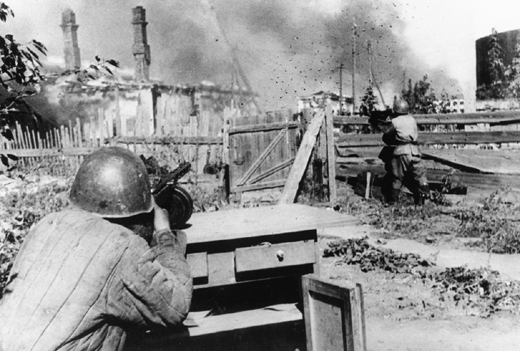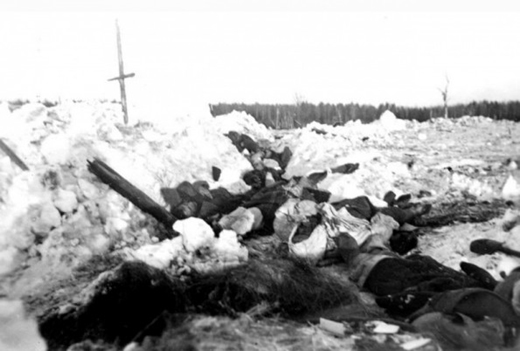Air Operations, Bismarcks
90th Heavy Bomb Group B-17s attack a cargo ship in the Bismarck Sea, and a Japanese destroyer, 2 cargo ships, and 2 tankers in the Solomon Sea.
[Air Operations, Europe
Hit-and-run raiders attack 20 towns and villages in southern Britain, under cover of low clouds. 2 aircraft machine-gun a train. 7 people are killed. The Germans lose 2 planes in the raid.
BOMBER COMMANDMinor Ops:
- 8 Wellingtons are sent to bomb a German aircraft depot at Diepholz; 3 planes bomb the general area, but with no evidence of success; 1 Wellington is lost. 18 aircraft lay mines in the Gironde River and off Brest and Lorient.
- 1 Stirling is lost.
Air Operations, Libya
9th Air Force B-25s and P-40s attack and harass German Army troops in the El Agheila area.
[Air Operations, New Guinea
- 90th Heavy Bomb Group B-24s attack a wrecked ship off Gona.
- V Bomber Command B-26s and A-20s attack Japanese ground troops at Buna and along the Kumasi River, and strafe landing craft along the Kumasi River.
Air Operations, Solomons
- 5th Heavy Bomb Group B-17s attack the airfield at Munda Point, New Georgia. One B-17 is shot down by an A6M Zero.
- A 347th Fighter Group P-39 downs an A6M Zero over Guadalcanal.
Air Operations, Tunisia
- In separate missions, A-20s of the 15th Light Bomb Squadron and 47th Light Bomb Group 86th Light Bomb Squadron attack Axis vehicle columns on the road between Mateur and Massicault.
- XII Fighter Command P-38s attacking Axis ships at sea off Tunisia's northern coast claim a direct bomb hit on 1 vessel and a pair of 1st Fighter Group P-38 pilots down a lone Ju-88 around noon.
Burma
In the coastal Arakan region on the Gulf of Bengal the British forces have assembled 2 brigades of the 14th Indian Div to attack the Japanese lines between Maungdaw and Buthidaung with the aim of taking Akyab Island at the end of the Mayu peninsula. Advance units take the town of Maungdaw without opposition. The Japanese forces, however, have pulled out before the blow can fall. They move south to a shorter, more defensible line between Gwedauk and Kondan.
[Eastern Front
The Soviets begin the next phase, SATURN, of their winter offensive even though the German drive toward Stalingrad is still going forward slowly. The Soviet offensive on the middle Don is over a front of over 60 miles. The main blow falls on the Italian 8th Army on the middle Don and this force is almost immediately shattered along with part of the Rumanian 3rd Army. As in the Soviet offensive in November, there are very few German units in the immediate area of the attacks. Von Manstein is forced to detach some of the armored divisions engaged in Operation WINTER STORM to plug the gap and re-establish the front line.
Fighting in Leningrad |
 |
There are also Soviet attacks along the Chir against Army Detachment Hollidt. The German relieving attack toward Stalingrad is still going well but the Soviet breakthrough to the north threatens the sort of wide encirclement that has been particularly worrying to von Manstein for the past few weeks.
SOUTHERN SECTORThe Stavka launches Operation LITTLE SATURN, involving 425,000 Red Army troops and 5,000 artillery pieces. The Soviet 1st Guards and 6th Armies attack the Italian 8th Army (216,000 troops) but make only limited gains, their units encountering minefields and effective resistance from the Axis reserve (27th Panzer Div). The Soviert 3rd Guards Army makes good initial progress but is then forced back by the 22nd Panzer Div. Meanwhile, the Soviet 51st Army gives ground grudgingly to the painfully slow-moving LVII Panzer Corps.[MORE]
Dead Russian Soldiers |
 |
Germany, Strategy
Hitler issues an order on how to deal with partisans on the Eastern Front: 'If the repression of bandits in the East, as well as in the Balkans, is not pursued by the most brutal means, the forces at our disposal will, before long, be insufficient to exterminate this plague. The troops, therefore, have the right and the duty to use any means, even against women and children, provided they are conducive to success. Scruples of any sort are a crime against the German people and against the German soldiers.'
[Guadalcanal
Gen Patch orders the 132nd Infantry, Americal Div, to occupy Mount Austen, which dominates the island, as a preliminary move to a major offensive to be undertaken in January. The Mount Austen sector is to be controlled by Marine Col John M. Arthur, commander of the west sector.
The Tokyo Express is again in operation. The destroyer Kagero is damaged by US dive bombers.
[New Guinea
Gen Eichelberger takes command of the US 32nd Division after Gen Byers is wounded while observing operations on the Urbana front. The headquarters of the Advance New Guinea Force moves from Popondetta to Dobodura. On the Urbana front, the 2nd Battalion of the 128th Infantry renews its attack on Coconut Grove and clears it by noon. A bridgehead across Entrance Creek is established, as engineers repair the bridge, from which to attack the Triangle. A platoon of Company F, 126th Infantry, called Schwartz patrol, is ordered to Tarakena, west of Siwori, to protect the left flank.
[North Africa
LIBYABecause of the progress of the New Zealanders to their rear, the Axis force at El Agheila splits into small groups to break away. They make for Buerat, where they intend to establish a new defensive line. In the course of their rearguard action they lose 20 tanks and 500 men killed, wounded and captured.
[Pacific
- The Japanese submarine I-15 is sunk by naval land-based aircraft (VS-55) in the Solomon Islands area.
- The US submarine Halibut (SS-232) sinks the Japanese merchant cargo ship Shingo Maru (4740t) off Shiraya Zaki, Honshu. In the confusion involved in the Halibut's attack on the Shingo Maru, the cargo ship Genzan Maru (5708t) is run aground, stranded and abandoned.
United States, Home Front
'Whipple's Comet' is discovered by Dr Whipple of the Harvard University Observatory. It will become visible to the naked eye from Great Britain in January 1943.
[